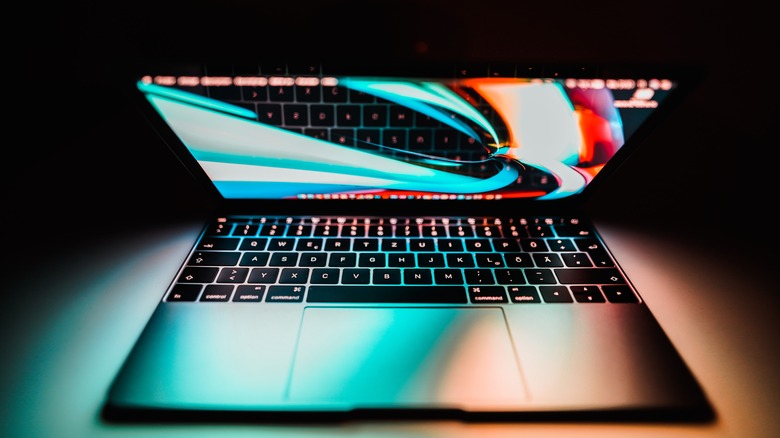
photosince/Shutterstock
I’ve been using Windows for as long as I can remember. It was my baseline — a no-brainer for affordability, customization, power, and gaming. Macintosh was simply never a consideration; I used the iMac a few times in school, but only out of obligation. I was very much in the camp of people that thought Apple products were for sheeple who enjoy paying five-star prices for five-year-old software and hardware features. Fast-forward to the present, and I’m writing this article on a MacBook.
How did that happen?
Short version of a long story: a friend slowly nudged me to try their old, unused iPhone so they could iMessage and AirDrop me, and eventually I «saw the light.» Fast-forward a few months, and suddenly, I was buying a MacBook at the Apple Store. My «Wintendo» PC remains only for playing games, since gaming on the Mac isn’t up to snuff. For such a large shift, do I regret my decision to spend oodles of money and lock myself into a notoriously restrictive ecosystem, retrospectively speaking? Let’s discuss.
Here are some of my reasons for switching to Mac, plus the things I miss from Microsoft — and whether I feel it was the right choice.
Mac works when Windows does not
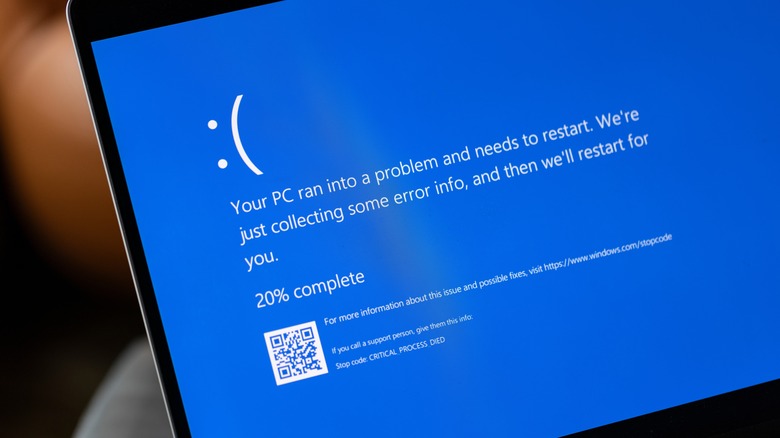
Lea Rae/Shutterstock
If there is one thing Microsoft Windows does well, it’s raising my cortisol to dangerous levels with technical difficulties. I can’t keep track of how often my PC bugs out, crashes, freezes, or gives a black or blue screen. Task Manager is practically my most-used program with how often I need to terminate misbehaving apps — and even that doesn’t work all the time, forcing me to do a hard shutdown. I’ve wasted many a good Saturday troubleshooting technical problems. If nothing is going wrong, then Windows is begging me to update for the umpteenth time this month. You get the idea.
«Apple just works,» people often say. It’s cliché, but I find it to be generally true. Macintosh is a fairly low-maintenance system that is almost always ready when I need it. System-breaking bugs, crashes, and freezes are exceedingly rare. I can’t ever remember having a critical error so bad I had to force shutdown or restore the system from a backup. Updates come at most once a month. If I put my Mac to sleep, it’ll wake up when I need it again. Windows’ sleep mode is a special breed of headache — more on that later. This isn’t to say that there aren’t any bugs on Mac, but most are small annoyances that can be fixed with minimal troubleshooting.
Sleep mode and battery life is unreal

Volkankovancisoy/Getty Images
In recent years, I’ve stumbled upon a bug where my Windows PC refuses to wake after being put to sleep for longer than about 24 hours. Extensive troubleshooting solved nothing. Asking around, I found several other friends had the same problem. Apparently, it’s Windows refusing to play nice with anything but integrated graphics. Supposing this weren’t an issue, I’d still have to restart my computer at least once a week to clear the RAM and remedy increasing sluggishness. Mac’s sleep mode, by comparison, is on another level.
Aside from just working, most Mac users only shut down or restart their devices when there’s an update. I personally leave my Mac on for months and notice no slowdown, no degradation in performance. Power Nap makes sure I receive notifications and sync iCloud in the background so I’m ready to get to work when I open it.
Battery life is another area where Mac absolutely trounces Windows. My MacBook Air is rated for 18 hours max battery life, although it realistically gets about 8-to-12, depending on my workload. A full day’s worth, in short, and over a week in sleep mode give or take. I’ve never seen a comparable Windows ultrabook reliably get more than six. Plus, Modern Standby (Windows’ trademark sleep mode) is hilariously bad. I’ve never been able to put Windows laptops to sleep for more than a day or two before they die. The outlook for the new Windows ARM PCs isn’t great either, as I’ve seen tests suggesting the battery life is only a few hours extra.
macOS is clean and focus-friendly
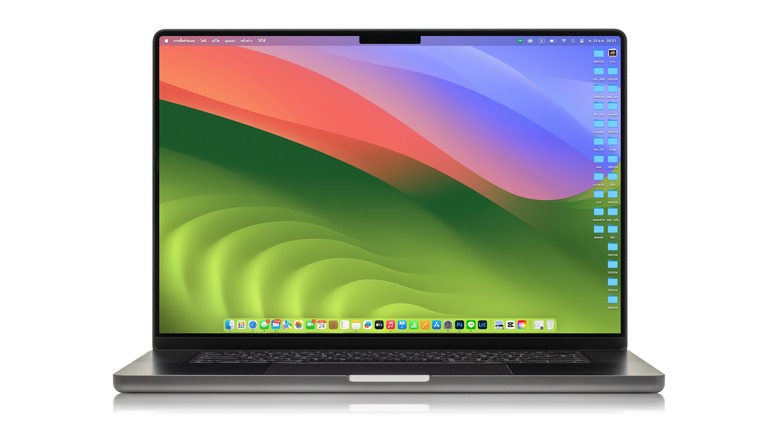
19 STUDIO/Shutterstock
It feels sometimes like Microsoft’s strategy with Windows is to be as obnoxiously distracting as humanly possible. There’s always some new thing bugging you, some new feature that’s been shoehorned in whether you like it or not. After a fresh install of Windows, I usually spend an hour just removing all the crud from the taskbar, mass-uninstalling bloatware, and disabling all the privacy-unfriendly settings and nags — and again after a major update, too.
Microsoft puts Bing search results in the start menu and, recently, ads for random apps you’ll probably never use. Microsoft keeps refreshing the UI and changing around the location of things, so with each major feature update I find myself relearning and decluttering the operating system. I could go on, but you get the point. Mac is, again, in a league of its own in this regard.
It’s hard to point to only one reason why Mac feels so clean and streamlined. The UI is very minimalistic; few windows pop up in your face without good reason; there aren’t any ads, and it’s rare for a particular feature to be foisted upon you. Meanwhile, macOS just gets out of the way, so you can do what you need. Apps tend to adhere to Yosemite design language, so there’s a uniform look across programs rather than a patchwork quilt. Fullscreen completely eliminates distractions, and it’s easy to break up your work into multiple spaces. Combined with powerful keyboard shortcuts and trackpad gestures, everything is built to get work done quicker without unnecessary annoyances. I can only speak subjectively (and as a writer), but I’ve been more productive since making the switch.
iCloud storage is phenomenal
I’ve tried all the major cloud storage services on Windows: Dropbox, Google Drive, Sync, pCloud, etc. OneDrive is the best, and I’d recommend it to any Windows/Android users. Still, it doesn’t hold a candle to iCloud when using macOS and an iPhone.
One of many things you learn as first-timer in macOS is that iCloud is invisible. There’s no app to open it. You simply place files in iCloud folders on Finder, wait for the little pie-chart icon to fill up, and the file is in the cloud and ready to go. Fire-and-forget. There’s no need to check your OneDrive pop-up window for progress bars or syncing errors, and no need to figure out why your files aren’t showing up on other devices. It just works. Native Apple apps sync through iCloud flawlessly, too.
My favorite part though is how seamlessly it integrates with third-party apps. Normally, apps like Obsidian and Joplin (which use your cloud storage service to sync your data) have to be manually set up. Not with iCloud. You give permission to sync with iCloud, and you’re done. It’s fast and lets you keep all your data private and in one place rather than trusting a bunch of third parties. This is huge, since Advanced Data Protection can make your iCloud end-to-end encrypted (E2EE) so that you and only you can access your data. Very few cloud storage services support E2EE.
Installing programs is very easy
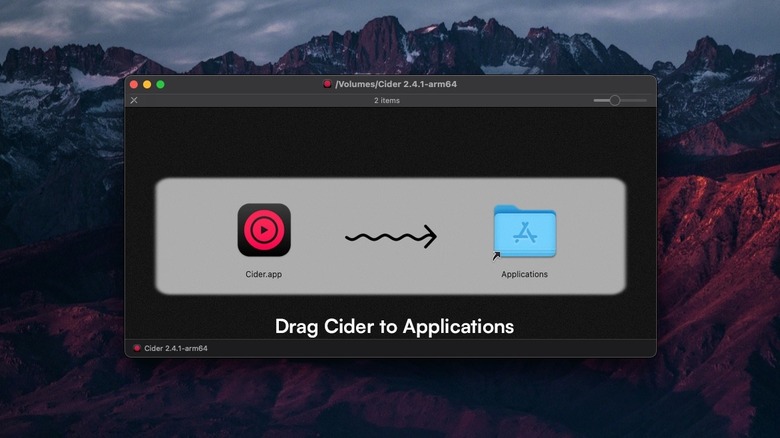
Jordan Wirth/SlashGear
Installing a program on Windows is different every time. When opening an executable, you’re treated to an installation wizard that inundates you with options to click through. You have to accept the TOS; choose the installation location (Program Files for 64-bit, Program Files x86 for 32-bit); choose extra installation features like language packs, and allow the program to create a start menu icon and desktop shortcut. Then, sit through a progress bar until you get another page asking if you want to start the program immediately and/or visit the company’s website. You can’t click through the pages quickly since every program has different options. You could miss something important, and some installers will try to sneak opt-out crapware past you.
You install most programs on Mac through the App Store (a one-click solution), but third-party apps downloaded off the Internet are shockingly easy to install, too. Simply open the .dmg file and drag the app icon into your applications folder with the provided pop-up window. That’s it. Then, summon the app either from Spotlight or the Launchpad, after which you can pin it to the Dock. If you want to uninstall the app, you drag it from the applications folder to the trash can. No uninstallers, no junk in your registry, no problem. It’s a small thing, but this genuinely blew my mind. It’s emblematic of many small, albeit impactful improvements that came with my Mac switch.
The ecosystem is (usually) pretty wonderful
One good thing that can be said for Windows is that very, very little is restricted to the Microsoft ecosystem. Apple, conversely, has built a restrictive walled garden around its products and fought tooth and nail to keep people inside it. Apple devices typically don’t play well with competitors, nor allow their best features on them. One thing I think most people can agree on, though, is that the ecosystem can sometimes be pretty amazing — provided you have at least a couple of Apple devices.
Some of those ecosystem benefits have become essential for me. I love being able to seamlessly, automatically switch AirPods from my Mac to another device rather than manually switching or draining my battery with multipoint; sending files from my Mac to my iPhone is stupidly easy with AirDrop; my Apple Watch automatically unlocks my Mac for me; Handoff lets me start something on one device and finish it on another; Universal Clipboard means I can copy something on my iPhone and paste it almost instantly on my Mac.
Similar features usually require third-party software on Windows (I’d rather not put any more trust in third parties than I have to) and often aren’t as seamless, anyway. Some features simply aren’t possible elsewhere. Apple’s ecosystem perks usually work by default on all platforms. I’ve often found the Apple version is better. Take the upcoming iPhone mirroring feature which lets Mac users not only control their locked iPhone and view its notifications natively, but drag and drop files seamlessly, too.
The trackpad is unmatched
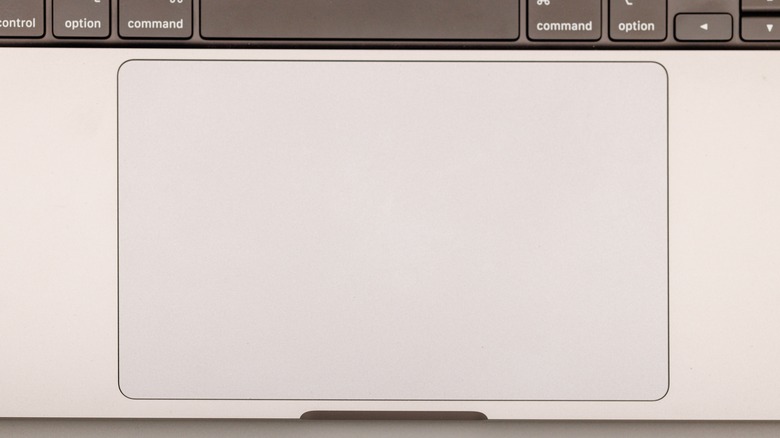
SAVIKUTTY VARGHESE/Shutterstock
Nothing else compares once you’ve tasted the forbidden fruit that is the Mac trackpad. It’s spacious, smooth, and accurate. It uses a simulated click via haptic feedback so you can click anywhere on the surface, not just on the bottom half where the physical click is most pronounced. Pressing down a bit harder with a force click enables a bevy of useful features — take things like instant dictionary look-up, or Quick Look preview of a file.
The multitouch gestures make using the trackpad so enjoyable and that you might prefer it over a mouse. I love the two-finger tap to zoom or the two-finger swipe to navigate back and forth in web pages. It feels so natural to expand four fingers to show the desktop, or close them in a claw shape to get to the launchpad. With something like BetterTouchTool, you can create your own gestures to level up your productivity. Apple sells the Magic Trackpad, a wireless, standalone version for desktop Macs that — provided you don’t suffer from carpal tunnel — brings all those gestures to the iMac or Mac Mini.
Pricing is painful
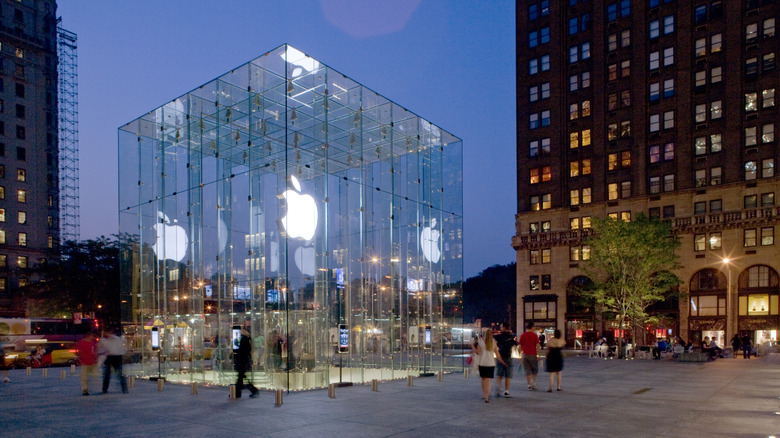
Maremagnum/Getty Images
Now to the limitations of Macs, and the biggest one right out of the gate is what you were thinking of this whole time: the price. Macs cost so much they probably require a mortgage in an alternative universe. The cheapest brand-new macOS computer you can buy is the MacBook Air M2 at the low, low price of $1,000. To add insult to injury, this is only eight gigabytes of RAM and 256 gigabytes of SSD storage. That’s the slower, single NAND chip, by the way. You’d have to pay $200 for the 500 gigabytes to get the faster two-chip NAND option. Eight gigabytes of RAM probably won’t cut it if you want a future-proofed machine that will last as long as possible, so 16 gigabytes will cost another $200. That’s $400 extra just to get mid-range specs, and we haven’t even discussed AppleCare protection plans, peripherals, and monitors.
A Windows PC for half the price could crush the M2 in benchmarks and have double the storage and RAM. Building your own device with a $1,600 budget (the cost of the baseline MacBook Pro) would give you a powerful PC capable of running any game at Ultra settings and boasting several terabytes of storage and 32 gigabytes of RAM.
That entry-level MacBook Pro, meanwhile, would get you a 512 gigabytes SSD and eight gigabytes of RAM. The only silver lining I can think of is that Macs (anecdotally) tend to have higher build quality and last longer. I really cannot fault anyone for finding it unconscionable that anyone would buy Apple products with prices like these.
Programs tend to cost money
One Statista study showed that Apple users are more willing to pay for apps than others. Cue my surprise when I found out a not-insignificant portion of Mac apps will cost you. On Windows, the vast majority use a free, open-source, or third-party freemium model. Developers have to be careful with how they price things, as users simply won’t pay if they don’t feel it’s worth it. On Mac, many apps require a single-license purchase or a subscription. Many of the apps I recommended in this article have no free option, even though they are amazing.
A perfect example of this is one of my go-to browser extensions, Dark Reader. Dark Reader is totally free on Chrome and Firefox, but on Safari, it costs $4.99. If it isn’t a Mac app costing money when the Windows version is free, then it’s an equivalent app on Mac that has no free version. This isn’t to say the average app costs as much as Photoshop (most sit in the $5-15 range), but it adds up quickly.
To be clear, I have nothing against supporting developers to keep their wonderful projects alive. I do get the feeling sometimes, though, that devs prey upon Apple users’ willingness to pay. This probably encourages their competitors to do the same, and thus an endless cycle begins.
Repairability and upgradability is a joke
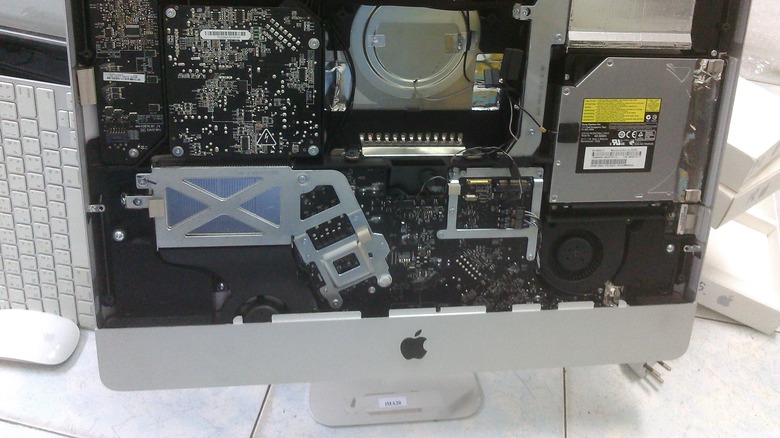
EightWiriya/Shutterstock
Apple doesn’t like it when you repair its devices without its blessing. They do some downright unethical things to cow independent repair shops into submission, and they carefully control which parts can be installed to stop unsanctioned repairs. This lets them sell expensive AppleCare plans and charge a premium. They claim to do this for security reasons, but we all know a greedy, money-grubbing corporation when we see one. Especially seeing as Apple digs in the spurs to avoid covering manufacturer defects like the butterfly keyboard and the recent «Dustgate.»
It’s also infuriating that you can’t upgrade your Mac. You have to decide at purchase how much CPU, GPU, RAM and storage you’ll keep for the rest of the device’s lifespan. In fairness, Apple Silicon is an SoC that’s soldered onto the motherboard, so perhaps a CPU, GPU, or unified memory swap would be impractical. On the other hand, being unable to upgrade the SSD is completely unacceptable, especially now with compression-mounted RAM being a thing.
Apple drags its feet with features

Qilai Shen/Getty Images
Apple’s business strategy, many argue, is to wait and see which new features its competitors incorporate. If a thing works and is well-received, Apple makes its own (hopefully) better version. Sadly, the rest of the time it feels like Apple is living in its own separate reality from that of its users. Obvious features don’t come for years, if ever.
Case in point: macOS Sequoia will bring window snapping and tiling in 2024, a desktop management essential for PC users that’s been around since Windows 7. That such a basic function is only just arriving almost two decades after it first appeared makes you wonder what you’re paying all that Apple tax for.
As a result, I have to use a ton of third-party software to get functionality that non-Mac users usually have by default. That means having to trust more developers with my data, and leaving more programs running in the background to consume resources. Not great.
I don’t regret my choice to switch to Mac
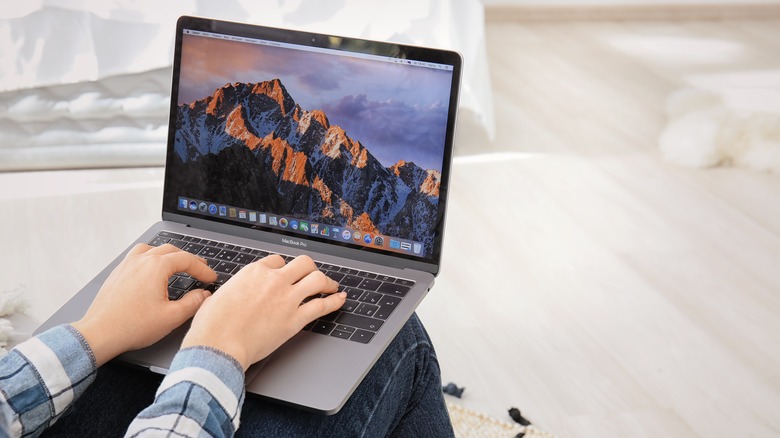
photosince/Shutterstock
Fresh off the heels of some pretty heavy downsides, it may come as a surprise that I don’t regret my decision to switch for a second. Looking at things in aggregate, it mostly comes down to preference. I prefer the way Mac does things in a very general sense, and the ecosystem makes it so my Apple devices integrate in a way no other companies do. There are several features that I can’t live without now that I’m used to them. I can tolerate the disadvantages because of these reasons.
Several things haven’t yet mentioned also factor in. I love Apple’s stance on privacy, the focus given to on-device processing, and its more thoughtful implementation of AI features (Apple Intelligence). The company seems to be less capricious compared to Microsoft, and has a more defined trajectory.
To be clear, I’m not here to throw shade on Windows or Linux users or the platforms themselves. There’s no reason to switch to Mac for the vast majority of people, and the downsides of the platform kill off what little incentive there might have been. For those who like the things I’ve mentioned, however, the switch might be worth it, provided you can live with the issues I’ve mentioned.